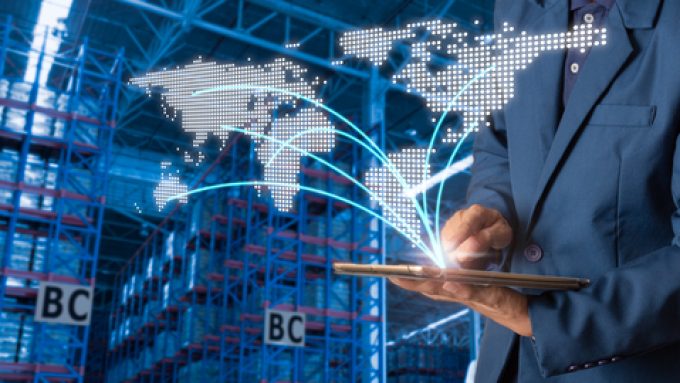Wong Siew Loong joins Kerry Logistics as CCO and MD South-east Asia
Kerry Logistics Network (KLN) has announced the appointment of Wong Siew Loong as its chief ...
BA: WIND OF CHANGEMAERSK: BULLISH CALLXPO: HEDGE FUNDS ENGINEF: CHOPPING BOARDWTC: NEW RECORDZIM: BALANCE SHEET IN CHECKZIM: SURGING TGT: INVENTORY WATCHTGT: BIG EARNINGS MISSWMT: GENERAL MERCHANDISEWMT: AUTOMATIONWMT: MARGINS AND INVENTORYWMT: ECOMM LOSSESWMT: ECOMM BOOMWMT: RESILIENCEWMT: INVENTORY WATCH
BA: WIND OF CHANGEMAERSK: BULLISH CALLXPO: HEDGE FUNDS ENGINEF: CHOPPING BOARDWTC: NEW RECORDZIM: BALANCE SHEET IN CHECKZIM: SURGING TGT: INVENTORY WATCHTGT: BIG EARNINGS MISSWMT: GENERAL MERCHANDISEWMT: AUTOMATIONWMT: MARGINS AND INVENTORYWMT: ECOMM LOSSESWMT: ECOMM BOOMWMT: RESILIENCEWMT: INVENTORY WATCH

Control and visibility are the two most vital aspects of a shipper’s pharma supply chain, and carriers and forwarders will need to ensure they can harness both to build their share of the growing sector.
The pharma products currently in development will require a rigorous cold chain and temperature monitoring, with some shipments needing to be transported up to –80ºC, according to an industry source.
And VP of International Sales at UPS Healthcare Cathy O’Brien said that this shift in focus for “more complex healthcare treatments with a range of specialised needs”, including medical devices, clinical gene therapy and lab specimens, had brought control and visibility to the forefront of pharma shipper’s requirements.
“There is a substantial set of growing breaks and risks that will need to be addressed. As we get more complex and specialised, the margins for error get even smaller,” she urged.
Indeed, Gaetan van Exem, global vertical head of pharma and healthcare cold chain at Maersk, told The Loadstar he had seen “a clear trend and increased demand for more resilience by pharma customers”.
He explained that two major things create resilience: visibility and asset control.
Ms O’Brien added: “It all comes down to control and visibility; we like to think of it as having a ‘control tower’ overview of an entire supply chain.” She emphasised that the first step for a forwarder or carrier looking to break into pharma shipments was being able to aggregate data across the entire supply chain.
This includes inventory data in warehouses, inbound and outbound shipment data, temperature data, sustainability metrics and more.
“You can create a comprehensive data stream from pick-up to delivery that makes your supply chain ‘smarter’ and, by extension, more resilient – especially if one area was to go down.”
However, harnessing real-time temperature data is only one half of the equation. Being able to act on this data – having ‘control’ – is the other.
Mr van Exem told The Loadstar: “The compelling aspect is our ability to react quickly to this data.”
“This could include diverting cargo, changing mode of transport or accelerating it; for instance, with sea-air solutions, even while it is on its way,” he explained.
Ms O’Brien added: “With the right network, it also means you can effectively utilise and divert resources from one mode to another in response to disasters or disruptions.”
Another way to bolster resilience, according to Mr van Exem, is by creating “decoupling points along the transport chain”.
Speaking about the upcoming Gemini alliance between ocean carriers Maersk and Hapag-Lloyd, he said: “The hub ports, at which the mainliner services will call, act as decoupling points, if you like. This is where we can react in case disruption of any kind occurs. Other decoupling points can be cold stores.”
Listen to this clip from The Loadstar Podcast to hear director of The Global Shipper’s Forum, James Hookham, talk about what shippers want from the Gemini alliance:
Ms O’Brien highlighted that there had already been “an industry-wide re-imagining” of what can be done around supply chain management… as well as a shift towards data and technology.”
Such technology, she said, included robotics, automated picking systems and track-and-trace solutions – all will play a “vital role”.
“They help streamline order fulfilment, reduce errors, increase efficiency and ensure regulatory compliance,” she explained.
And a spokesperson from Kuehne+Nagel told The Loadstar that integration of AI and machine learning was essential to enable real-time monitoring, route optimisation, demand forecasting and risk management.
According to the spokesperson, these technologies will not only ensure products reach their destinations quickly and intact, but also render it cost-effective for the forwarder or carrier.
“When you marry control and visibility, it allows you to orchestrate an entire supply chain from end to end, improving collaboration and efficiency and increasing smart, fast, sustainable decision making, based on real-time data instead of guesswork,” concluded Ms O’Brien.
Comment on this article